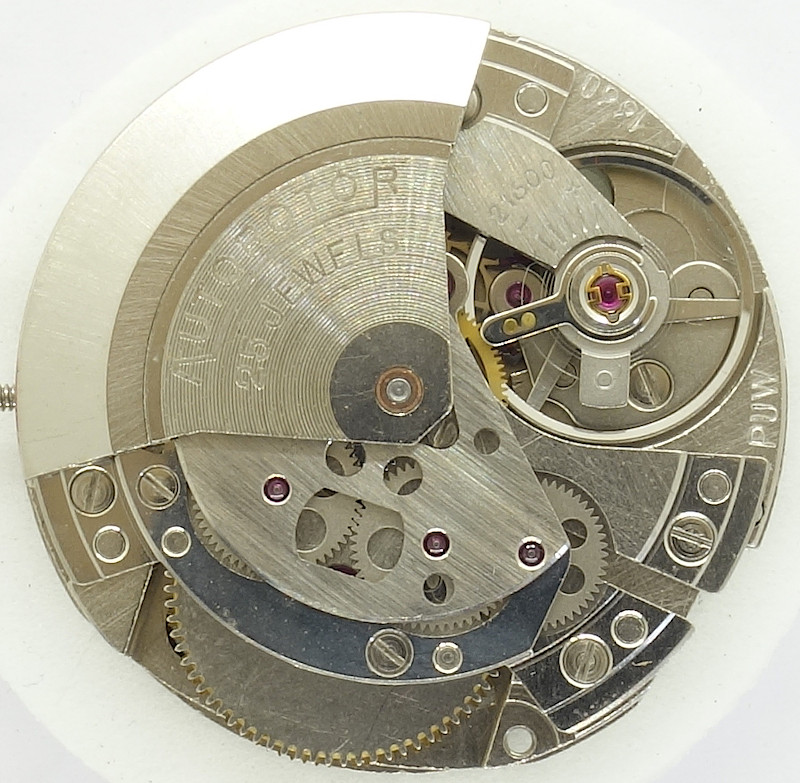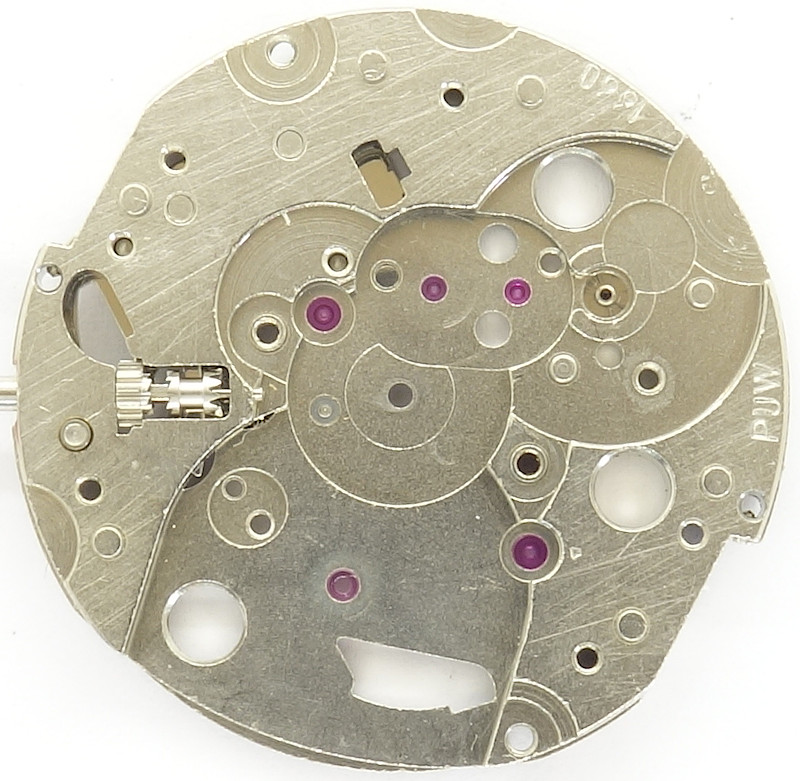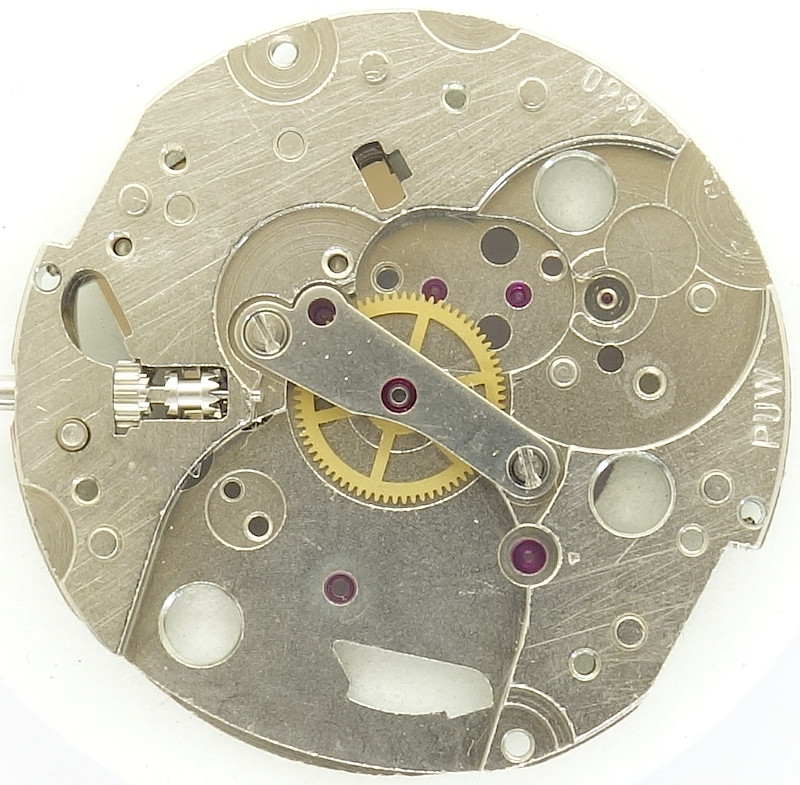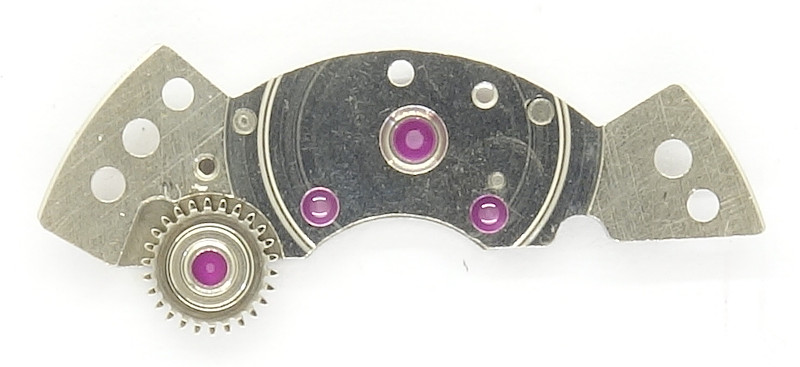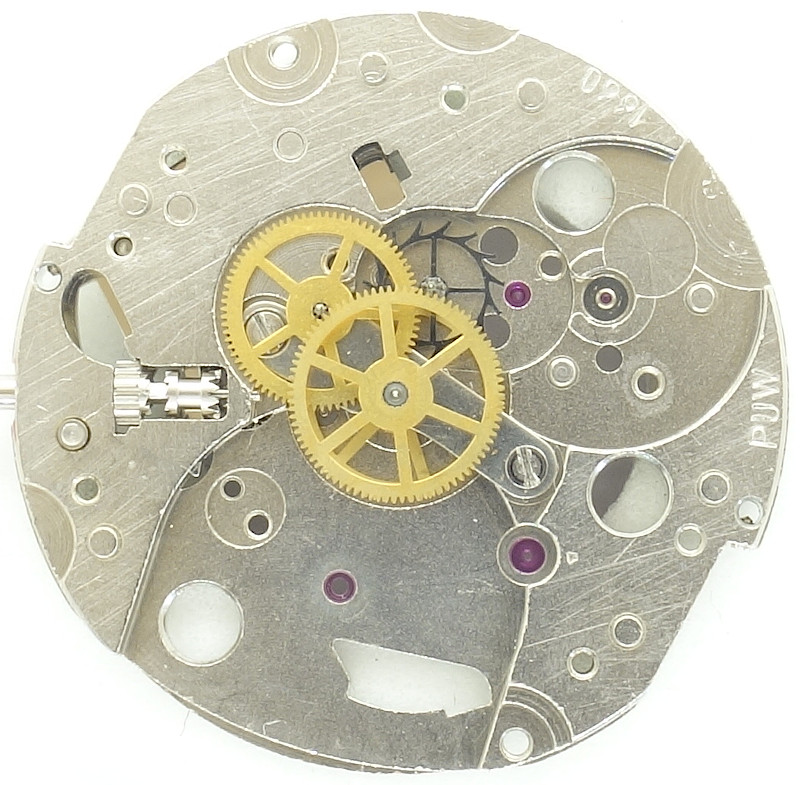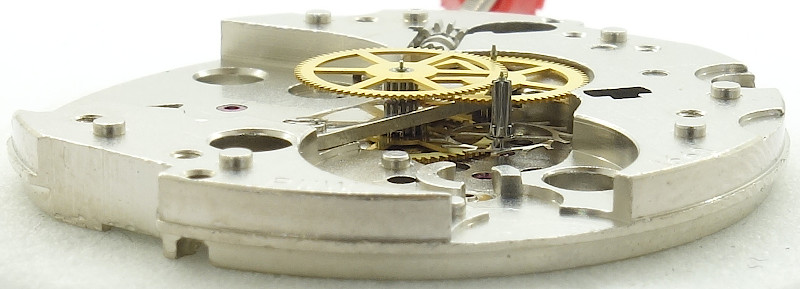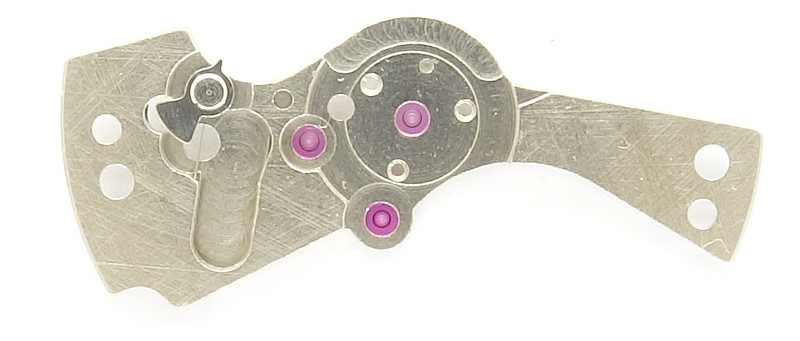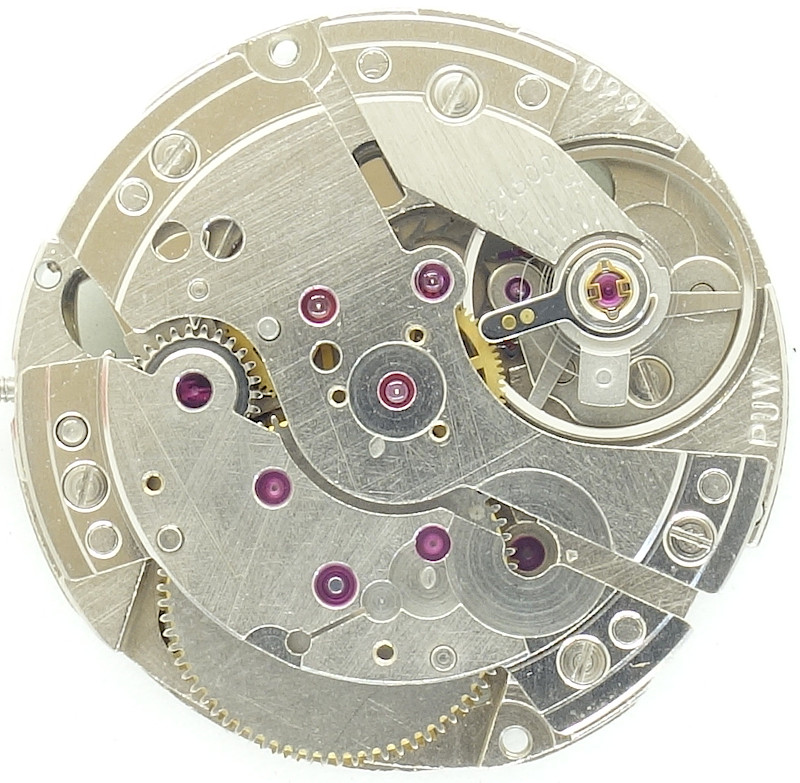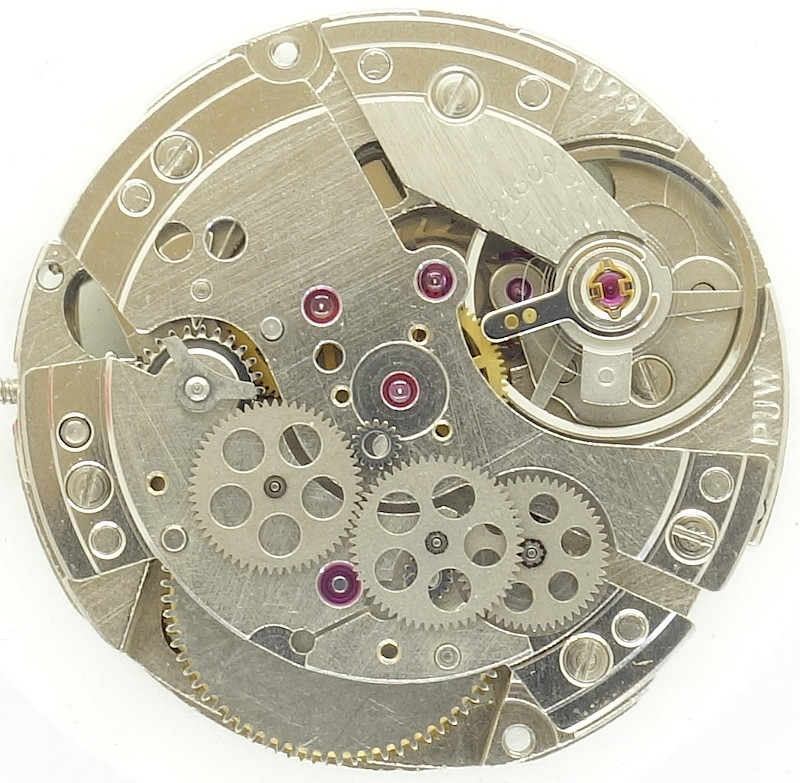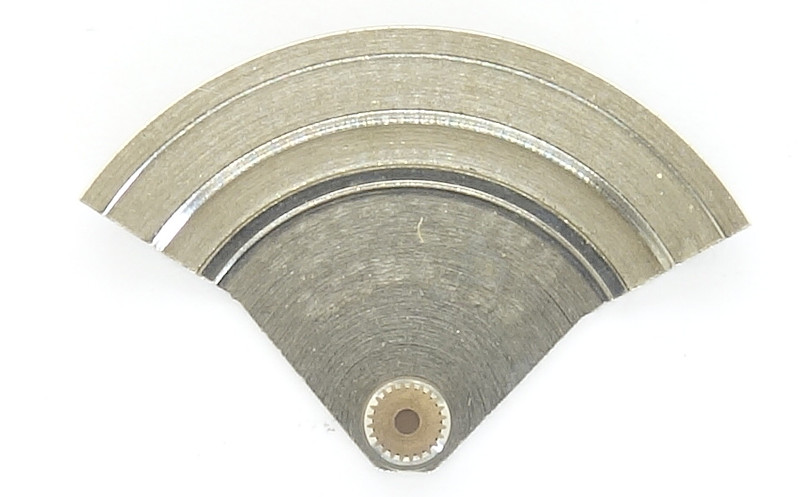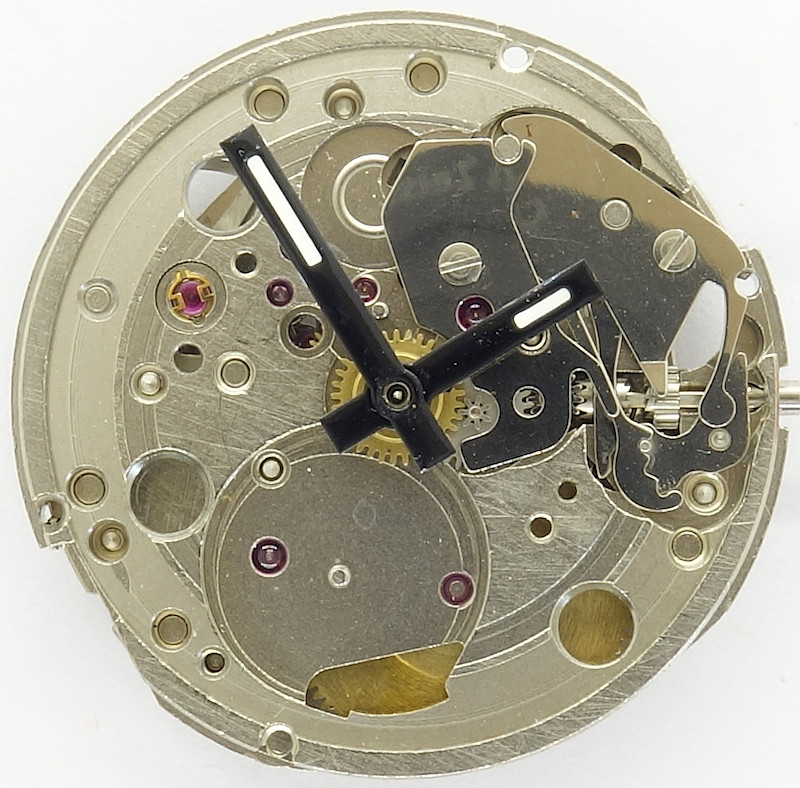Description
The last series of mechanical gents movements by PUW was the caliber series 660/1660, which was only produced between 1977 and 1979, at a time, when nobody saw a future for mechanical watches.
On this series, you can see some modern solutions, such as the date correcting mechanism, but on the other hand, there are several signs of cost cutting constructions like riveted wheels or a one-third oscillating weight.
The PUW 1660 is the base caliber of the automatic series; besides the central seconds hand, there are no further indicators.
With a diameter of 11 1/2 lignes (25,6mm) it was at eye level with the common ETA movements at the time.
Of course all important bearings contained rubies, except those for the minute wheel and mainspring barrel, because due to their low rotational speed, they were not critical for bearing.
It’s nice to see the preparations for date quickset mechanism at 10 and 12 o’clock. On this caliber, they were not used.
The construction with a central minute wheel looks a bit old-fashioned, but on the other hand, this construction is so proven, that even today many manufacturers still use a center minute wheel, which is directly driven by the mainspring barrel.
Speaking of the barrel: Below the mainspring barrel bridge, there’s the crown wheel, which is riveted with the bridge. A cost-efficient, but now very service-friendly solution.
As already indicated above, there’s the classical gear train: The large mainspring barrel drives the center minute wheel, followed by third wheel, center seconds wheel and steel escape wheel.
The modern three-leg anular balance is of course without screws, but shock protected (here in two RUFA Antishock bearings). It still beats rather slowly with 21600 A/h and won’t easily run within the chronometer specs. Since the adjustment is only possible at the hairspring key, the PUW 1660 sells below value.
The next riveted part is the ratchet, which is located on the inner side of the gear train bridge, as well as the associated u-shaped spring.
When the selfwinding mechanism is not yet mounted, you can see the nicely slanted shapes of the brigdes and also the locations of crown wheel and ratchet and how they interact.
The axle bearing for the oscillating weight is mounted and secured by three screws on top of the gear train bridge.
The coupling of the first reduction wheel to the exchange wheels of the selfwinding mechanism is realized by a genious construction: Below the right exchange wheel, there’s a flying beared wheel, which is pushed by the selfwinding wheels onto the reduction wheel, so that it revolves. When, on the other hand, the movement is manually wound, the revolving of the reduction wheel achieves, that the flying beared wheel gets out of the powerflow and disengages the selfwinding mechanism.
The second flying beared gear engages with the oscillating weight and, depending on its direction of rotations, it engages with either the left or the right exchange wheel, which also interact. With that construction, the oscillating weight turns the right exchange wheel always turns on the same direction. The left exchange wheel is locked by a pawl to turn into the wrong direction.
The dead angle of the selfwinding mechanism, the angle of the oscillating weight, where it does not wind due to the roation direction change, is pretty small with only about 45 degrees. Since the oscillating weight is only a third of a circle, the movement efficiently weights even on little movement.
Unfortunately, at the end of the 1970s, nobody cared anymore for this efficient and genious construction of a selfwinding movement. The upcoming quartz watches were much more interesting at that time.
For the first time at PUW, probably due to cost cutting reasons, a half circle shaped oscillating weight was replaced by a third circle shaped one. There was also no ball bearing, they remained with the axle bearing.
On the dial side, you can see the preparations for the date indication mechanism. The middle position of the crown stem, which can be seen at the setting lever spring, has got no function here.
It’s sad, that this technically very interesting movement marked the end of the manufacturing of mechanical movements at the PUW. It deserved better.
In the lab
Technical data
| Manufacturer: | PUW |
| Caliber: | 1660 |
| Caliber base: | PUW 660 |
| Size: | 11 1/2''' (measured: 25,6mm) |
| A/h: | 21600 |
| Number of jewels: | 25 |
| Escapement: | Pallet lever |
| Balance types: | Nickel anular balance |
| Shock protection(s): | Rufa-Anti-Shock |
| Balance bearing / direction hairspring: | Clockwise |
| Moveable stud: | yes |
| Adjust mechanism: | Hairspring key |
| Construction: |
|
| Construction type: | solid construction |
| Winding mechanism: | yoke winding system |
| Setting lever spring: | 2 hole(s) |
| Features: |
|
| Production period: | 1977 - 1979 |
| Inventory number: | 20019 |
